|
|
|
Sort Order |
|
|
|
Items / Page
|
|
|
|
|
|
|
| Srl | Item |
| 1 |
ID:
076080
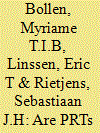

|
|
|
|
|
| Publication |
2006.
|
| Summary/Abstract |
This chapter discusses the impact Provincial Reconstruction Teams (PRTs) have on the security situation in Afghanistan, specifically in countering the terrorist threat and in counter-narcotics.
The Afghan people define the lack of security as their country's greatest problem. The terrorist activities of groups opposed to the central government and the political process compounded by violence related to the opium trade are seen as the main sources of insecurity. The authors argue that, currently, PRTs should not assume active counterterrorism as an additional main area of operation. The complexity of Afghanistan's security environment and the pressure to have PRTs involved in the counter-narcotics effort underscore the necessity of local knowledge and experience in the PRTs. Participation of indigenous actors, such as NGOs, in the PRT-organisational structure could provide this required expertise
|
|
|
|
|
|
|
|
|
|
|
|
|
|
|
|
| 2 |
ID:
144867
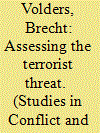

|
|
|
|
|
| Summary/Abstract |
Each terrorist organization faces a critical tradeoff between effectively managing the organization's violent behavior while remaining secure from counterterrorism efforts. Drawing on organization theory and terrorism literature, this article develops theoretical linkages between the organizational design of a terrorist group and this critical tradeoff. It considers the impact of four key design parameters: membership, operational space and time, formalization, and centralization. The first two structural parameters construct the physical anatomy of a terrorist organization. The latter two structuring parameters prescribe or restrict the behavior within this organizational context. Net advantages by means of rising structural design parameter values are increasingly offset by the organizational strength and security vulnerabilities that inherently follow from the rising structuring parameters.
|
|
|
|
|
|
|
|
|
|
|
|
|
|
|
|
| 3 |
ID:
147743
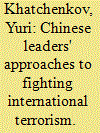

|
|
|
|
|
| Summary/Abstract |
The situation in the fight against terrorism in the PRC remains tense. The problem of opposition to religious extremism and separatism is. as before, one of the main tasks facing the Chinese leadership, and Beijing's steps in this sphere are becoming increasingly harsh, comprehensive, and high-tech.
|
|
|
|
|
|
|
|
|
|
|
|
|
|
|
|
| 4 |
ID:
112879
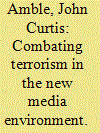

|
|
|
|
|
| Publication |
2012.
|
| Summary/Abstract |
Since the 1990s, jihadist terrorists have leveraged the power of the Internet in more imaginative ways than state security services charged with countering them. Terrorist groups are now harnessing the unique characteristics of the new media environment that has taken shape in the past decade, while security services struggle to conceptualize this rapidly evolving virtual landscape. But new media offers unique opportunities to these services, particularly intelligence agencies, to confront the terrorist threat. Identifying and exploiting these opportunities, both strategic and tactical, will lend critical advantage to governments in their worldwide confrontation with global jihadists.
|
|
|
|
|
|
|
|
|
|
|
|
|
|
|
|
| 5 |
ID:
097918
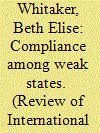

|
|
|
|
|
| Publication |
2010.
|
| Summary/Abstract |
This article examines levels of compliance with the counter-terrorism regime in Africa, where weak states might have been expected to conform. Instead, even under American pressure, some governments have seized the anti-terrorism rhetoric while others have been more reluctant. A comparative analysis of Kenya, Tanzania, and Uganda demonstrates that domestic political factors largely explain this variation; compliance is highest in countries with the least democratic institutions and minimal mobilisation of domestic constituencies. Aid dependence and the perception of a terrorist threat also play a role. To the extent that popular pressures in transitional democracies reduce compliance, the article raises questions about the legitimacy and effectiveness of the counter-terrorism regime.
|
|
|
|
|
|
|
|
|
|
|
|
|
|
|
|
| 6 |
ID:
151777
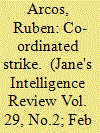

|
|
|
| 7 |
ID:
149707
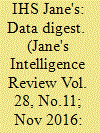

|
|
|
| 8 |
ID:
123890
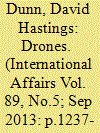

|
|
|
|
|
| Publication |
2013.
|
| Summary/Abstract |
The Obama administration's controversial use of drones in Afghanistan, Pakistan and Yemen has made the subject a hot topic of political and academic discourse. While most of this debate has focused so far on the legal, ethical and prudential use of large armed aerial vehicles, this article seeks to address the potential wider impact of this new technological innovation.
The article argues that drones constitute a new and disruptive technology not just in the way that they have been used to enable a new form of counterterrorism. Instead, it argues that drones pose a new form of terrorist threat against the West which is at present under-analysed, unarticulated and underestimated.
Part of the reason for this underestimation is the failure to appreciate the scale and scope of drone use for commercial purposes which is about to unfold. Technological innovation now means that drones will be capable of many jobs currently performed by small planes and helicopters, but more cheaply and easily - in addition to many other new applications.
The proliferation of this cheap and easily available technology will make its application for terrorist use easy to achieve and difficult to counter. The ability of drones to penetrate traditional defences and established conceptions of what constitutes a plausible threat is a challenge which so far has gone unheeded. This article seeks to challenge that complacency.
|
|
|
|
|
|
|
|
|
|
|
|
|
|
|
|
| 9 |
ID:
132880
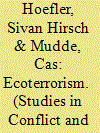

|
|
|
|
|
| Publication |
2014.
|
| Summary/Abstract |
This article examines the phenomenon of "ecoterrorism" from a conceptual and empirical perspective. We explore the political and academic debates over the meaning and use of the term ecoterrorism, and assess the validity of the concept of "ecoterrorism" and of the alleged threat of the Radical Environmentalist and Animal Rights (REAR) movement by analyzing the characteristics of both the movement and its actions. Our analysis shows that the term ecoterrorism should only be used for a small proportion of the actions of REAR movement. Consequently, counterterrorist measures should only target these terrorist minorities, rather than all groups and the broader movement.
|
|
|
|
|
|
|
|
|
|
|
|
|
|
|
|
| 10 |
ID:
090325
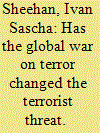

|
|
|
|
|
| Publication |
2009.
|
| Summary/Abstract |
Whether the Global War on Terror (GWOT) has changed the terrorist threat is a matter of controversy. This study, using transnational terrorism events data from 1993 through 2004, employs a time-series approach to investigate the extent to which the onset of the GWOT (beginning with the invasion of Afghanistan) and related events (the invasion of Iraq, the capture of Saddam Hussein, and the release of photos from Abu Ghraib) are associated with changes in transnational terrorist activity, its frequency, dispersion, lethality, type of attack, and type of victim of transnational terrorist incidents.
|
|
|
|
|
|
|
|
|
|
|
|
|
|
|
|
| 11 |
ID:
173243


|
|
|
|
|
| Summary/Abstract |
This article attempts to fill a gap in research on terrorism in the Visegrad Group member states. Its major objective is to discover and understand whether terrorism truly is a serious threat to V4 members. To reach this goal, quantitative and qualitative content analysis is used. The conducted analysis has demonstrated that V4 member states hardly report any arrests or convictions of individuals accused of terrorist activities. The threat of terrorism exists. However, it is definitely less imminent than in the United States or Western European countries. The data indicate that Visegrad members deal with the challenge of non-Islamist terrorism. In Central Europe, left-wing militancy is almost non-existent, and right-wing extremism, though evidently present in the region, is not a major threat in the context of terrorism.
|
|
|
|
|
|
|
|
|
|
|
|
|
|
|
|
| 12 |
ID:
122247
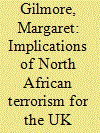

|
|
|
|
|
| Publication |
2013.
|
| Summary/Abstract |
The attack on the Tigantourine gas facility near In Amenas in Algeria highlights the shifting nature of the terrorist threat to the national security of the UK and its interests abroad. It is a sign that the threat, while still very strong in parts of Pakistan and Afghanistan, is growing in North Africa. However, this does not necessarily mean that North Africa will be where the most significant threat can be found in future, or where extra resources should be allocated now. Using current interviews and historical evidence, Margaret Gilmore investigates where the counter-terrorism challenges of the next five years might come from.
|
|
|
|
|
|
|
|
|
|
|
|
|
|
|
|
| 13 |
ID:
073504
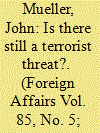

|
|
|
|
|
| Publication |
2006.
|
| Summary/Abstract |
Despite all the ominous warnings of wily terrorists and imminent attacks, there has been neither a successful strike nor a close call in the United States since 9/11. The reasonable -- but rarely heard -- explanation is that there are no terrorists within the United States, and few have the means or the inclination to strike from abroad.
|
|
|
|
|
|
|
|
|
|
|
|
|
|
|
|
| 14 |
ID:
128009
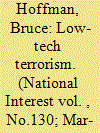

|
|
|
|
|
| Publication |
2014.
|
| Summary/Abstract |
AMONG THE MORE prescient analyses of the terrorist threats that the United States would face in the twenty-first century was a report published in September 1999 by the U.S. Commission on National Security/21st Century, better known as the Hart-Rudman commission. Named after its cochairs, former senators Gary Hart and Warren Rudman, and evocatively titled New World Coming, it correctly predicted that mass-casualty terrorism would emerge as one of America's preeminent security concerns in the next century. "Already," the report's first page lamented, "the traditional functions of law, police work, and military power have begun to blur before our eyes as new threats arise." It added, "Notable among these new threats is the prospect of an attack on U.S. cities by independent or state-supported terrorists using weapons of mass destruction."
|
|
|
|
|
|
|
|
|
|
|
|
|
|
|
|
| 15 |
ID:
106616
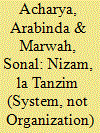

|
|
|
|
|
| Publication |
2011.
|
| Summary/Abstract |
The decline of the terrorist organization and the phenomenon of "homegrown" or "leaderless" jihad have led to the perception that the terrorist threat has moved from commander-cadre organizations to diffused networks or cells and individuals. However, using the November 2008 terrorist attacks in Mumbai, this article demonstrates that organizations do matter in terrorism. In other words, to produce successful and high impact attacks, terrorists do need some form of organization. Even leaderless jihad is not truly leaderless or devoid of some form of organization as the proponents of this concept claim. Moreover, even as the environmental entropy-reduction in the capacity of the environment to support an organization-has become distinctly pronounced in respect of terrorism, some groups did not have to make the same tradeoff as others due to their favorable position vis-a-vis the state they operate in. Therefore, these groups are capable of producing attacks of high operational sophistication with (a) strong organization and (b) state support to maintain that organization.
|
|
|
|
|
|
|
|
|
|
|
|
|
|
|
|
| 16 |
ID:
093741
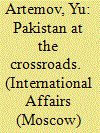

|
|
|
|
|
| Publication |
2009.
|
| Summary/Abstract |
The Islamic Republic of Pakistan (IRP) - one of the largest Muslim states (the fifth largest in the world) and the only one that has nuclear weapons - is currently going through what is probably the most difficult period in its history. A combination of the growing terrorist threat, fueled by radical Islamism, Talibanization, ethnic separatism, and financial and economic difficulties has caused a deep, countrywide crisis.
|
|
|
|
|
|
|
|
|
|
|
|
|
|
|
|
| 17 |
ID:
128226
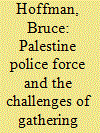

|
|
|
|
|
| Publication |
2013.
|
| Summary/Abstract |
This article assesses the performance of the Palestine Police Force (PPF) in countering the Jewish underground organizations that challenged British rule over Palestine after World War II. It argues that four reasons account for the PPF's inability to contain the terrorist threat: the chronic manpower shortages that ultimately compromised its effectiveness and required the military's intervention; the progressive militarization of the PPF that undermined its ability to discharge traditional police functions; its desperate deployment of elite, special counterterrorist units; and its problematical collection and analysis of intelligence. The article concludes that these weaknesses inevitably led to a situation where the maintenance of law and order was impossible and British rule was rendered untenable.
|
|
|
|
|
|
|
|
|
|
|
|
|
|
|
|
| 18 |
ID:
111617
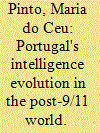

|
|
|
| 19 |
ID:
052199
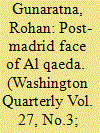

|
|
|
|
|
| Publication |
Summer 2004.
|
| Summary/Abstract |
The terrorist threat has shifted beyond Al Qaeda as a group to an ideology. In many ways, Al Qaeda has completed its mission of being the vanguard of Islamic movements, having inspired a generation of two dozen existing groups as well as an emerging generation of them.
|
|
|
|
|
|
|
|
|
|
|
|
|
|
|
|
| 20 |
ID:
073515
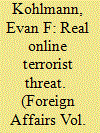

|
|
|
|
|
| Publication |
2006.
|
| Summary/Abstract |
Fears of a "digital Pearl Harbor" -- a cyberattack against critical infrastructure -- have so preoccupied Western governments that they have neglected to recognize that terrorists actually use the Internet as a tool for organizing, recruiting, and fundraising. Their online activities offer a window onto their methods, ideas, and plans.
|
|
|
|
|
|
|
|
|
|
|
|
|
|
|
|
|
|
|
|
|